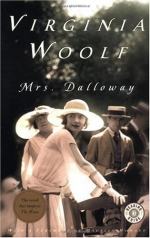|
This section contains 11,451 words (approx. 39 pages at 300 words per page) |

|
SOURCE: Levy, Heather. “‘These Ghost Figures of Distorted Passion’: Becoming Privy to Working-Class Desire in ‘The Watering Place’ and ‘The Ladies Lavatory.’” Modern Fiction Studies 50, no. 1 (spring 2004): 31-57.
In the following essay, Levy argues that “The Watering Place,” “The Ladies Lavatory,” and “The Cook” reveal Woolf's exploration of the “fricative interrelationships between class, lesbian desire, and the occupation of public and private space.”
The bodies and minds of working-class women are elided in most of Virginia Woolf's earliest shorter fiction and then only partially or unflatteringly staged in most of her middle and final shorter fiction. Only in rare moments of resistance in the unpublished A13d version of “The Cook,” in “Mrs. Dalloway in Bond Street,” in “The New Dress,” and in “The Shooting Party” do they manage stirring moments of strategic resistance or at least a partial articulation of their ideas and desires, rather than recalcitrant...
|
This section contains 11,451 words (approx. 39 pages at 300 words per page) |

|


